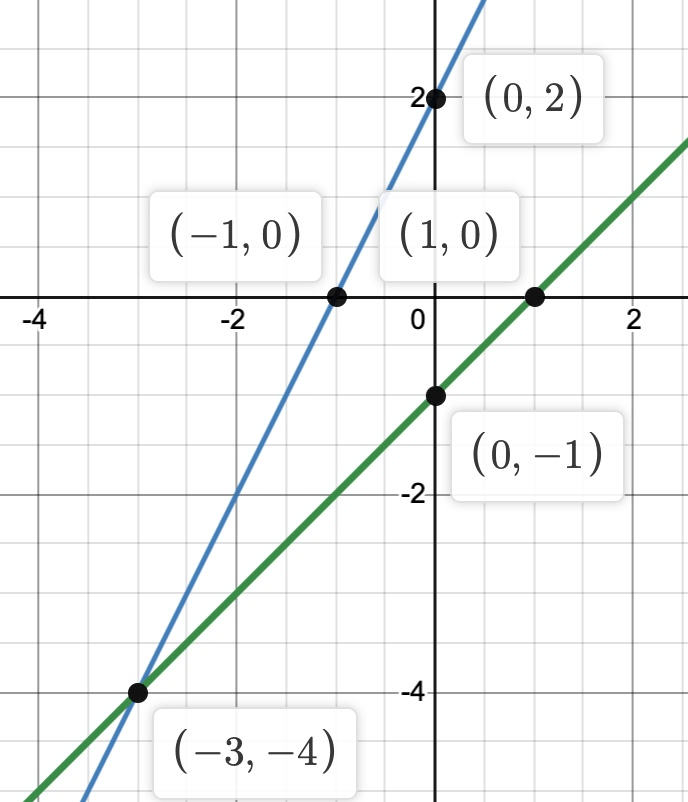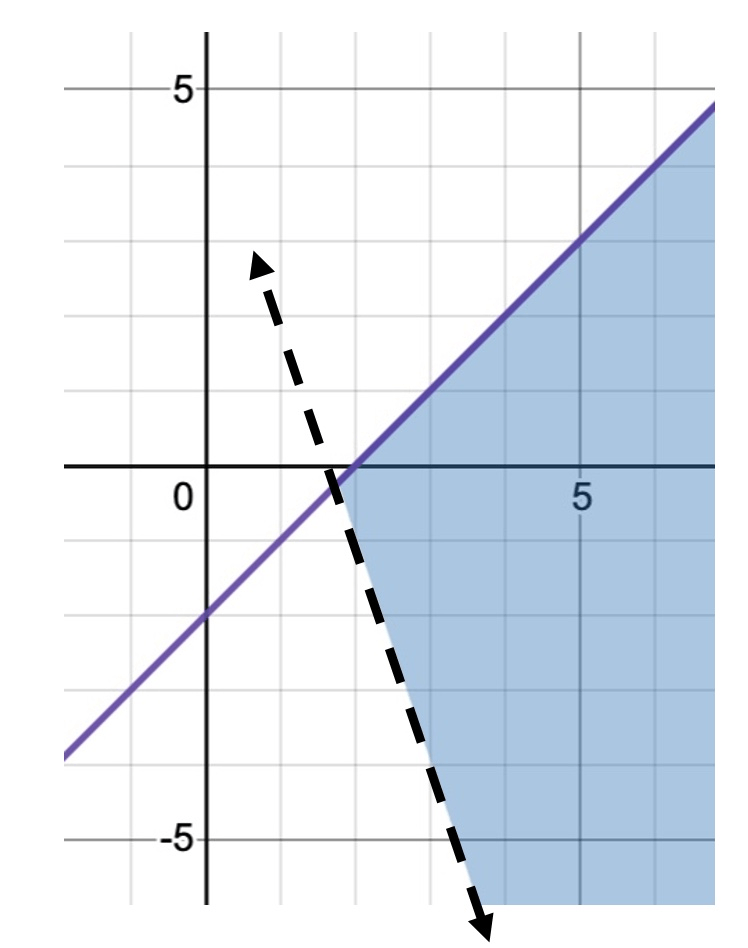x + 3y = 7
8x - 3y = 2
(1,2)
y = 2
x + 2y = 6
(2,2)
y = 2x + 2
y = x - 1
(3,-4)

Solve for y:
x + y = 8
y = -x + 8
when graphing linear inequalities what does < and > mean
Use a Dotted Line
4x - 3y = 16
5x + 3y = 20
(4,0)
y = 3x
2x + y = 10
(2,6)
y = 2x + 5
y = x + 3
(-2,1)
Solve for y:
8x + 2y = 14
y = -4x +7
what does ≤ and ≥ mean when graphing linear inequalities
solid line
-2x - 9y = -25
-4x - 9y= 23
(-1,3)
y = 5x - 1
2y = 3x + 12
(2,9)
3x - 2y = 8
x + y = 6
(4,2)
Solve for y:
x + 3y < 9
y < -1/3 x + 3
systems of inequalities can only be solved ______
graphically
4x - 9y = 2
12x - 5y = -38
(-4,-2)
2x - 3y = -2
y= -4x + 24
(5,4)
y = 1/2x + 2
y = 1/4x + 4
(8,6)
Solve for y:
6x > 3y - 12
y < 2x + 4
How is graphing systems of inequalities different than graphing systems of equations?
they use dotted lines sometimes and you have to shade to find the solution
The equations 5x + 2y = 48 and 3x + 2y = 32 represent the money collected from school concert tickets sales during two class periods. If x represents the cost for each adult ticket and y represents the cost for each student ticket, what is the cost for each adult ticket?
x=8
x + y = 10
-y = 5 + x
no solution
4x - 5y = 15
8x + 5y = 45
(5,1)
Solve for y:
4x - 2y > 20
y < 2x -10
y ≤ x − 2
y > −3x + 5
